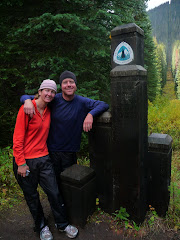After finishing day three, we arrived at Refugio Italia/Segre/Laguna Negra. All of the huts or refugios are pretty awesome. For 30 pesos we could sleep in the refugio and use all of their pots, pans etc. Some huts such as Refugio Italia had a little extra to offer - homebrewed beer.

Day four ended up being much more difficult than I thought. On day four, we made our way around Laguna Negra, up the scree that you can see in the background of the first photo and then up the ridge to the right. After traversing, we reached the top only to see what was in store for us: a steep descent, a valley and then a huge scree field straight up. In the photo below you can see our intended path - down and straight up the mountains on the other side.
 After reaching the top of this seemingly impossible section we were rewarded with some amazing views.
After reaching the top of this seemingly impossible section we were rewarded with some amazing views.
An hour or two from the top we reached Refugio Lopez. We intended on cowboy camping that night, but the weather had other plans. Around midnight we found ourselves shoving our sleeping bags in our packs and running into the hut.
 On day five, we had a quick and muddy descent to the road where we caught a bus back to Bariloche.
On day five, we had a quick and muddy descent to the road where we caught a bus back to Bariloche.
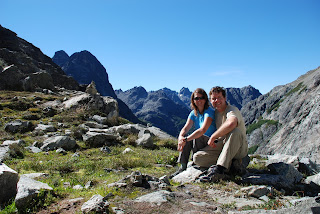









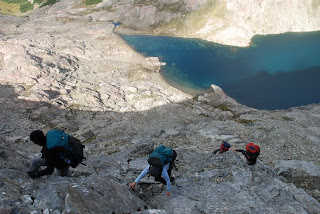









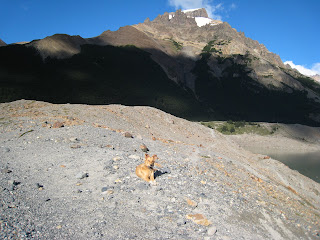 6.) The wind knocks you over.
6.) The wind knocks you over. 9.) Rain gear is the only effective mosquito repellent.
9.) Rain gear is the only effective mosquito repellent. 10.) The "trail" you're following may have been erected by a blindfolded, drunken Chileno.
10.) The "trail" you're following may have been erected by a blindfolded, drunken Chileno. 
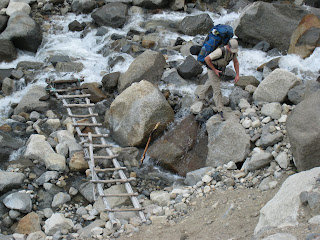

 We enjoyed a nice cappuccino with Juliano, from Italy, and Jonas, from Belgium, as well Maggie, from Amsterdam, that night.
We enjoyed a nice cappuccino with Juliano, from Italy, and Jonas, from Belgium, as well Maggie, from Amsterdam, that night. Early the next morning (around 5:30 a.m.) we hiked up to the towers and waited for the rising sun to do its magic. The photo below is of the towers. Every morning the towers turn from rose to orange and then finally gold as the sun's first rays of light rise over the mountains in the east.
Early the next morning (around 5:30 a.m.) we hiked up to the towers and waited for the rising sun to do its magic. The photo below is of the towers. Every morning the towers turn from rose to orange and then finally gold as the sun's first rays of light rise over the mountains in the east. That same day we parted ways with our friends and headed for the backside of Torres. Over the next few days we would pass through Seron, Lago Dickson, Los Perros and finally over John Gardner Pass, where we would finally see Glaciar Grey. We ended the trip a couple days later camping on Lago Grey. The photo below is of me on the top of the windy John Gardner pass.
That same day we parted ways with our friends and headed for the backside of Torres. Over the next few days we would pass through Seron, Lago Dickson, Los Perros and finally over John Gardner Pass, where we would finally see Glaciar Grey. We ended the trip a couple days later camping on Lago Grey. The photo below is of me on the top of the windy John Gardner pass. 



